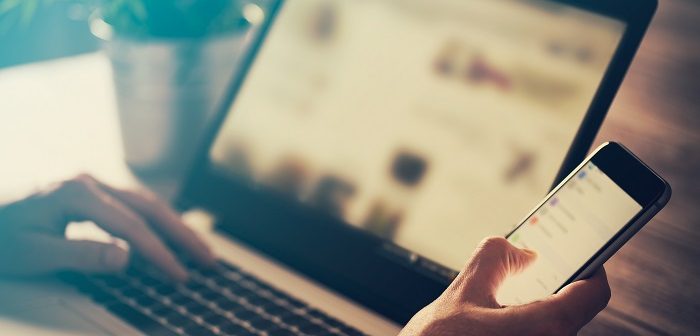Welcome to the era where technology reigns supreme in the battle against rising utility expenses! This article dives headfirst into the realm of smart solutions and savvy strategies to deal with pesky bills. Read on to unlock the secrets of controlling utility costs with cutting-edge technology, from real-time monitoring with smart meters to harnessing renewable energy.
Smart Meters: Real-Time Monitoring and Management
Smart meters are innovative devices that automatically record energy usage and send data to your energy supplier. These meters give exact and real-time energy readings, meaning that readings don’t have to be done manually and bills aren’t based on estimated readings.
With real-time data from smart meters, you can keep monitoring and controlling your energy consumption. This information helps identify appliances that use too much energy and allows you to change consumption patterns. Using smart meters can help you save significant costs. Accurate bills lead to fewer arguments with energy providers.
The UK (United Kingdom) government has initiatives designed to encourage people to use smart meters, such as the Smart Metering Implementation Programme. The idea is to make it more affordable and easier to upgrade to smart meters, by offering free installation and support. Ask energy providers, like Utility Bidder, about their smart meter incentives and installation.
Energy-Efficient Appliances and Systems
You can greatly lower utility costs with energy-efficient appliances, such as LED (light-emitting diode) lighting and Energy Star-rated products. These appliances can reduce utility bills because they use less energy without foregoing performance.
Energy-efficient appliances are more expensive to buy, but they make up for the cost with long-term utility savings. Switching from traditional bulbs to LED lighting can reduce your energy bills by up to 80%. As time goes on, your savings will outweigh the initial appliance cost.
Save more costs by upgrading to high-efficiency HVAC (Heating, Ventilation, and Air Conditioning) systems. Older models use up to 50% more than modern HVAC systems. Keep an eye out for HVAC units with high SEER (Seasonal Energy Efficiency Ratio) ratings.
You can substantially lower your energy bills by replacing old appliances and systems with energy-efficient models. These older models tend to waste energy and increase utility costs. Households that invest in new and efficient technologies will notice a decrease in their utility costs.
Home Automation and Smart Home Devices
You can drastically lower utility costs with smart home technologies, such as smart plugs and smart thermostats. With these devices, you can monitor and control your energy consumption from any location. They make utility management more convenient and improve cost savings.
Improve energy usage with automation that adjusts heating and cooling according to the number of people. Smart thermostats reduce energy waste by determining your habits and cooling and heating your home accordingly. Smart plugs automatically turn devices and appliances off when they aren’t being used.
You can combine smart home systems with renewable energy sources to increase efficiency and savings. Smart inverters manage energy flow to ensure that extra renewable energy is used and stored effectively. This makes you less dependent on grid electricity and lowers your energy bills.
Renewable Energy Solutions
You can substantially lower your utility costs by switching to renewable energy sources, like solar panels and wind turbines. Solar panels use sunlight to make electricity, and wind turbines generate power using wind energy. These two kinds of renewable energy solutions are cost-effective and sustainable options for UK homes.
Renewable energy systems are expensive investments that are offset by long-term savings on utility costs. These renewable energy systems can lower electricity bills by up to 70%. Maintenance is inexpensive, and investment costs are covered within five to 10 years. There are government incentives that help you pay for installation and maintenance costs.
One of the ways that renewable energy sources help to lower utility bills is by making you less dependent on the traditional power grid. These systems support a more sustainable future by minimising your carbon footprint and making you more environmentally aware. Renewable energy investment is a smart financial and ecological decision.
Energy Management Software
There are many energy management apps and tools that let you monitor and control real-time energy use. These platforms optimise efficiency with features that track energy use, notifications for strange consumption patterns, and improvement suggestions.
These tools point out periods and devices that use lots of energy, letting you make the necessary changes to use less energy. You can set alerts to help you deal with lights and equipment that are running unnecessarily as soon as possible.
Well-known UK energy management platforms include EnergyHub, Loop, and Smappee. These platforms are user-friendly and provide detailed analytics to help you understand consumption patterns. These platforms help you take the necessary actionable steps to lower utility costs.
Energy management software helps users reduce utility costs and promote environmental sustainability. Make sure to choose a platform suitable for your needs and that you understand all its features. This will maximise your efficiency and reduce your bills.
Water-Saving Technologies
Saving water is just as important as being energy efficient to manage utility costs. Using water-saving technology can reduce water bills significantly while promoting environmental sustainability.
There are water-saving devices, such as low-flow showerheads and smart irrigation systems, that contribute significantly to reducing water consumption. Low-flow showerheads use less water without losing water pressure. Smart irrigation systems improve watering schedules according to soil moisture levels and weather conditions.
Water-saving technologies noticeably reduce water bills. Your monthly water bills will drastically decrease when you use less water. This is a significant motivation for people to invest in these technologies.
The government has various water-saving initiatives in place to encourage people to implement water-saving technologies. Local water providers and government agencies will have more information about possible incentives that assist with installing water-saving devices. These programmes can help offset the expensive initial investment when implementing these technologies. They help you save money in the long run.
Government and Private Sector Initiatives
The UK government has different initiatives and grants in place to help people manage utility costs more effectively. One of these programmes is the Energy Company Obligation (ECO), which provides money to make energy-efficient improvements to homes. These improvements include insulation and boiler upgrades, which lower long-term energy costs.
The Smart Export Guarantee (SEG) encourages people to adopt renewable energy systems. SEG pays for any extra energy generated by households with renewable energy systems. You can use these programmes to reduce utility bills while also supporting national energy efficiency goals.
Future Trends and Upcoming Technologies
Utility management technologies are constantly evolving and advancing. Artificial intelligence (AI) and other machine learning technologies are constantly finding ways to improve energy use and reduce waste. Smart grids can distribute electricity more efficiently, which improves reliability and affordability.
Blockchain technology could facilitate secure and transparent energy transactions that let people trade extra energy directly. Be sure to stay updated and informed about emerging utility management technologies and trends. This will help you be more prepared for future challenges and opportunities.
Conclusion
Technology is crucial for cost control and sustainability in utility management. With innovations like smart meters and renewable energy, you can reduce bills and support a greener future. Use technology to become more efficient while making long-term savings.





For me, the concept of cryptocurrencies is simple, but not for everyone. For many, it’s difficult to choose a crypto wallet – a place to store your cryptocurrency and use it – choosing a crypto wallet can be an incredibly intimidating experience. There are about 150 different wallets to choose from, and check out info on how to set up a crypto wallet. Some only work with a few popular cryptocurrencies; others allow you to trade and store obscure types of digital tokens.
Leveraging technology to control utility expenses has become increasingly essential for both homeowners and businesses. Advanced solutions such as smart meters and energy-efficient appliances enable precise monitoring and optimization of electricity usage, leading to significant cost savings. Companies like aurora solar ustomer service provide robust software platforms that allow users to design and assess solar power systems efficiently, thus reducing dependence on conventional energy sources. This approach not only minimizes utility bills but also promotes sustainable energy practices. Moreover, integrating IoT devices with energy management systems ensures real-time tracking of consumption patterns, enabling timely adjustments to prevent wastage. By adopting these technological innovations, individuals and organizations can effectively manage and lower their utility expenses while contributing to a greener future.
Using technology to manage utility costs is a smart move. Smart meters, energy-efficient appliances, and home automation verizon internet and cable bundle systems can help track and reduce energy usage. These tools not only cut expenses but also promote sustainable living. Embracing these innovations can lead to significant savings and a smaller carbon footprint.
Need a mobile app to take your business to the next level? Look no further than the wealth of mobile app development company available online! While some specialize in creating basic apps, others offer comprehensive services, including design, development, and launch. Research their portfolios, compare features and pricing, and don’t forget to read client reviews to find the perfect fit for your project. Get started building your dream app today!
As a real estate investor, I found this blog incredibly insightful! Embracing smart technology to manage utility costs not only saves money but also enhances property value. The detailed explanation of smart meters, energy-efficient appliances, and renewable energy solutions is a game-changer for anyone involved in real estate investments. Keeping utility expenses low while promoting sustainability is a win-win for investors and tenants alike. Great read!
Leveraging technology in healthcare has transformed patient experiences and outcomes, particularly in audiology. One significant advancement is the integration of smart technology with hearing aids. By connect hearing aids to bluetooth users can enjoy seamless audio streaming from various devices, such as smartphones, TVs, and computers. This connectivity enhances the clarity of sound, making conversations, music, and media more accessible. Additionally, Bluetooth-enabled hearing aids often come with apps, allowing users to adjust settings, monitor battery life, and even track hearing health. This technological synergy not only improves the quality of life for those with hearing impairments but also exemplifies the potential of innovation in personal healthcare.